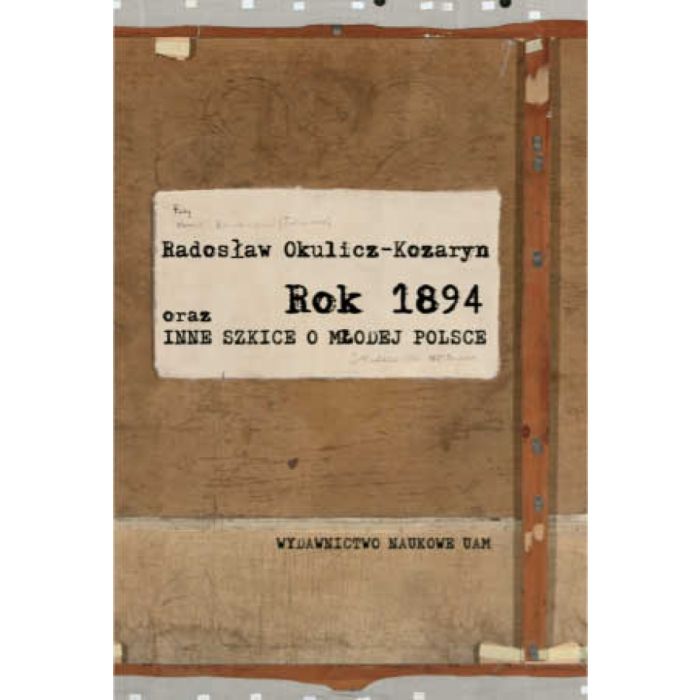Rok 1894 oraz inne szkice o Młodej Polsce
- In Stock: in stock
- ISBN: 978-83-232-2515-7
- Category: OUTLET, Polish Philology, Literary Studies
- Year of publication: 2013
Zbiór szkiców stawia na powrót kwestię początków tej epoki, które ukazane zostały jako efekt namiętnego przeciwdziałania dezintegracji obrazu świata i człowieka, rezultat pragnienia i intensywnego poszukiwania jedności zmysłów, uczuć i zapatrywań, scalania środków artystycznych i sztuk. Rok 1894 – tytułowy szkic tomu obudowuje rozdziałami o Pielgrzymce do Jasnej Góry Reymonta (Sceptyk idzie na pielgrzymkę) i Akordach jesiennych Jana Kasprowicza (Przełom indywidualny na tle przełomu wieków), którego Hymny i Chwile są w tomie przedmiotem dwóch odrębnych interpretacji. Analizuje też konstytutywne dla wrażliwości końca wieku zjawisko nerwowości (Gra nerwów. Chopin w epoce psychicznego rozstroju). Rozważając różne przejawy ścigania ideału muzyki w literaturze i sztuce symbolicznej, zwraca uwagę na jej wariacyjność i bierze w obronę przed zarzutem braku odkrywczości (W obronie monotonii i Stanisława Wyspiańskiego Teatr na Wyspie Umarłych). Przypomina również poetycki akt sprzeciwu wobec muzyczności świata (Daremne pragnienie uniwersalnej harmonii. „Gaśnienie” Tadeusza Nalepińskiego wobec młodopolskiej fascynacji porą zmierzchu). W końcowych szkicach zbioru dotyczących Aleksandra Szczęsnego (Cudowność wzgardzonych szczegółów), Jana Topassa (Styl zepsuty jako język ideału) oraz Aleksandra Wata (Futurystyczny koniec Młodej Polski? Baudelaire przy Watowskim „Piecyku”), śledzi zaskakujące estetyczne konsekwencje symbolizmu.
The sketches about Young Poland published in this book provide new answers to questions about the beginnings of this period, about the sources of its peculiar sensibility as well as the understanding of role of art and consequences of a refined concept of beauty. The author first describes the reception of Chopin’s works against the background of the idea of nervousness, which was influential in the late 19th century. Then, when describing the phenomenon of the popularity of Bocklin’s Isle o f the Dead and analyzing the structure of S. Wyspiañski’s Noc Listopadowa (The November Night), among others, he focuses on the key role of variation in both artistic and literary works modeled on music as an ideal art form. For the sake of contrast the author also recalls T. Nalepiñski’s debut work which denies the musical nature of the world. In the final sketches about A. Szczęsny, J. Topass and A. Wat, he examines further consequences of symbolism. Most of all, however, he revives the abandoned hypothesis about the groundbreaking role that the events of 1894 played in the history of literature; he extensively argues in support of this hypothesis when analyzing W. Reymont’s Pielgrzymka do Jasnej Góry [A Pilgrimage to Jasna Gora) and J. Kasprowicz’s Akordy jesienne [Autumn's Chords). Hymny [Hymns) and Chwile [Moments) written by the latter are subject to separate analysis.
| Detailed information | |
|---|---|
| Wprowadzenie |
Download file

|
| Spis treści |
Download file

|
|
|
|
| Publication Version | printed |
| Format | 17,0 x 24,0 |
| Title (EN) | The Year 1894 and Other Sketches about Young Poland |
| Type of publication | Monografia |
| Edition | I |
| Series | Filologia Polska nr 144 |
| ISSN | 0554-8179 |
| ISBN | 978-83-232-2515-7 |
| Number of pages | 196 |
| Number of publishing sheets | 12,00 |
| Type of binding | hardcover |
